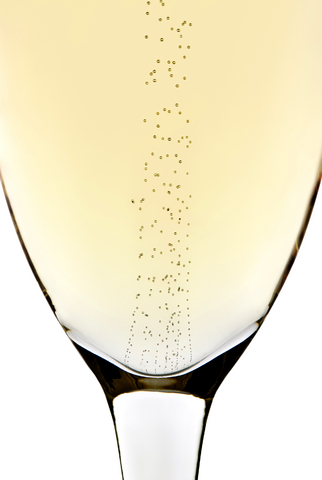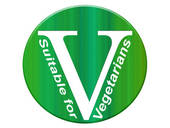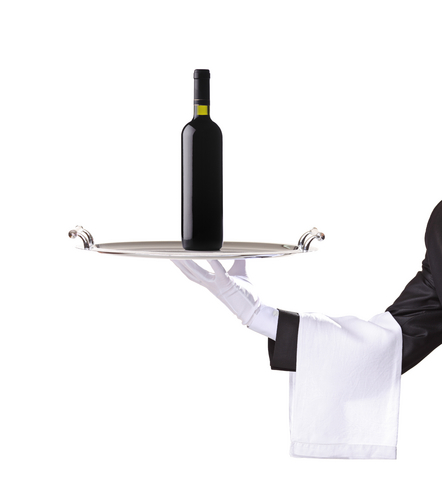by Lorri | Nov 17, 2010 | UnCorked
 Finding the ideal Thanksgiving wine can be hit or miss, with an array of flavors — turkey, coconut fruit salad, sweet potato casserole, mashed potatoes — all vying for the spotlight. With all of these dishes competing for the grandeur, it’s asking a lot for a single wine to match perfectly with all of our Thanksgiving favorites. So when it comes to Thanksgiving wine, think versatility.
Finding the ideal Thanksgiving wine can be hit or miss, with an array of flavors — turkey, coconut fruit salad, sweet potato casserole, mashed potatoes — all vying for the spotlight. With all of these dishes competing for the grandeur, it’s asking a lot for a single wine to match perfectly with all of our Thanksgiving favorites. So when it comes to Thanksgiving wine, think versatility.
There are many wines that can manage this clash of food flavors, weights and textures. Sparkling wine and Champagne are among the most versatile, and popping a bottle of bubbly is the ideal start for your Thanksgiving Day celebration. These wines work not only for toasting but have more food-friendly characteristics than other wines, allowing you to serve them throughout appetizers, dinner and even dessert.
But if non-bubbly is desired, there are options.
For white wines, Riesling is always a favorite, with its dry, light refreshing characteristics. This grape produces many styles and levels of sweetness. Choose a German “Kabinett” or dry style from California or Australia to better complement the food flavors. Gewurztraminer’s light-bodied texture and spicy taste is a good match for the range of flavors on a buffet table. A tried and true expression of this grape is produced in France’s Alsace region, with an aromatic, clean, light-bodied style.
The key when choosing a red wine is selecting a wine with low amounts of tannin. Pinot noir, Syrah and merlot are excellent accompaniments.
THE VALUES
- NV Gruet Blanc de Blanc Sparkling Wine, New Mexico (about $25 retail)
- 2007 Hayman & Hill Santa Barbara Pinot Noir, California (about $14 retail)
- 2009 Rosemount Riesling, Australia (about $10 retail)
- 2007 E. Guigal Cotes du Rhone Rouge, France (about $18 retail)
- 2008 Estancia Pinot Noir, California (about $16 retail)
THE SPLURGES
- 2008 St. Supery Napa Valley Merlot, California (about $34 retail)
- NV Jean Laurent Blanc de Blanc Champagne, France (about $55 retail)
- NV Argyle Brut Sparkling Wine, California (about $35 retail)
- 2007 Hugel Gewurztraminer, France (about $34 retail)
- 2006 Bell Big Guy Red, California (about $26 retail)
by Lorri | Nov 10, 2010 | UnCorked
 Hunting season is a much-anticipated time of year for many in the South. I frequently receive e-mails asking about pairing wine with wild game. Here are a few easy tips to keep in mind for pairing wines with your catch of the season.
Hunting season is a much-anticipated time of year for many in the South. I frequently receive e-mails asking about pairing wine with wild game. Here are a few easy tips to keep in mind for pairing wines with your catch of the season.
Deer, elk, caribou and moose: Venison is now thought of as primarily deer meat, though it can be the flesh of any game animal. Venison is leaner than domestic meat and often has a distinct, hearty flavor (the term “gamy” is sometimes used). It can be compared with beef dishes like steak or hearty stew, which are consumed with heavier red wines. A good rule is to pair game with a wine that shares the same intensity as the dish. A California zinfandel or pinot noir, France’s Cote de Rhone, Chilean merlot or French Bordeaux are good choices.
THE VALUES
- 2008 Santa Rita Merlot, Chile (about $12 retail)
- 2008 Mark West Pinot Noir, California (about $14 retail)
- 2008 Angeline by Martin Ray Pinot Noir, California (about $17 retail)
THE SPLURGES
- 2008 Renwood Old Vine Zinfandel, California (about $22 retail)
- 2008 Siduri Sapphire Hill Russian River Pinot Noir, California (about $56 retail)
- 2006 Chateau St. Sulpice Bordeaux, France (about $20 retail)
Duck, turkey, quail and pheasant: These birds generally have earthy flavors that are much bolder than chicken.
Because of this stronger flavor, a red wine can be an ideal match. A few varietals to consider are shiraz, zinfandel, pinot noir, grenache or tempranillo. When a white wine is called for, consider heavier and full-bodied wines such as chardonnay or Riesling.
THE VALUES
- 2007 Bogle Chardonnay, California (about $12 retail)
- 2008 Concannon Pinot Noir, California (about $12 retail)
- 2008 La Playa Chardonnay, Chile (about $12 retail)
THE SPLURGE
- 2008 Gemtree Uncut Shiraz, Australia (about $36 retail)
- 2008 Turkey Flat Grenache, Australia (about $38 retail)
- 2008 Justin Vineyards Chardonnay, California (about $26 retail)
by Lorri | Nov 3, 2010 | UnCorked
 When most people think of wine, they think grapes plus fermentation equal wine. But a stage in winemaking could actually be a dilemma for vegetarians and vegans.
When most people think of wine, they think grapes plus fermentation equal wine. But a stage in winemaking could actually be a dilemma for vegetarians and vegans.
Before bottling, winemakers generally choose to clarify and stabilize the wines in a process called fining. Skipping this step may result in wine that is hazy or has loose sediment floating around in it. Many of the main fining agents are animal-based products such as egg whites, milk, casein, gelatin and isinglass (fish bladders) or clay-derived bentonite.
During this process, what was used for fining is added to the wine. As it settles into the fermented wine, the particles adhere to the agent and drop to the bottom. Of course, the products used in fining do not remain in the wine and are sterilized into the bottle; some wines use no fining process at all.
The dilemma for most vegetarians and vegans? There is no obligation for wineries, restaurants or retailers to state if animal-based fining agents were used. But today the industry is becoming easier to navigate with many companies clearly stating on labels if the wine is suitable for vegetarians or vegans (vegan VG, vegetarian V) and a vast array of websites offering recommendations for these wines.
Considered the innovators, many wineries are producing “unfiltered” wines. This slower and more traditional method is gaining a lot of attention from those seeking more natural options. This method allows wines to settle naturally and even with a slight cloudiness or remaining sediment, has consumers understanding it’s not an indicator of quality but a winemaking choice.
Keep in mind companies’ winemaking methods will vary year to year, so to be sure the wines are suitable for your diet it’s best to call or e-mail the winery.
THE VALUES
- 2009 Frey Organic Cabernet Sauvignon, California (about $22 retail)
- 2009 Bonterra Vineyards Chardonnay, California (about $16 retail)
- 2006 Campo Viejo Crianza, Spain (about $15 retail)
- 2009 Hardys Nottage Hill Shiraz, Australia (about $12 retail)
- 2004 Peter Lehmann Clancy’s Red, Australia (about $22 retail)
THE SPLURGES
- NV Laurent Perrier Champagne, France (about $68 retail)
- 2007 Recanati Merlot, Israel (about $23 retail)
- NV Mumm Napa Brut Rose, California (about $40 retail)
by Lorri | Oct 27, 2010 | UnCorked
 When you think of the history of wine, particularly from countries with wine-centric cultures, you think centuries, but for New Zealand it’s only decades. The growth in New Zealand’s wine production and quality has been nothing short of phenomenal. The ideal climate paired with passionate winemakers catapulted this region’s significant breakthrough over the past 20 years.
When you think of the history of wine, particularly from countries with wine-centric cultures, you think centuries, but for New Zealand it’s only decades. The growth in New Zealand’s wine production and quality has been nothing short of phenomenal. The ideal climate paired with passionate winemakers catapulted this region’s significant breakthrough over the past 20 years.
Only 10 years ago, New Zealand winemakers announced to the world, “You ain’t seen nothing yet,” and today we are seeing the results.
Many vines considered young (compared to other parts of the world) are now developed vineyards, playing a part in the ever-increasing quality. The Central Otego pinot noirs are finally gaining their much-deserved international recognition, and Marlborough sauvignon blancs are today’s acclaimed white wine style.
As this country continues to flourish, so do the consumers’ choices of other grape varieties, adding to New Zealand’s growing reputation.
Most of New Zealand’s Rieslings are produced in the cooler South Island regions. It is a style much more reserved than neighboring Australia, and between the light floral Riesling of Germany and the austere wines of Alsace.
THE VALUES
- 2008 Brancott Classics Riesling, New Zealand (about $18 retail)
- 2008 Bird Marlborough Riesling, New Zealand (about $18 retail)
THE SPLURGES
- 2008 Spy Valley Riesling, New Zealand (about $24 retail)
- 2008 Daniel Schuster Waipara Riesling, New Zealand (about $24 retail)
- 2008 Mount Difficulty Roaring Meg Riesling, New Zealand (about $22 retail)
Many of the best chardonnays are produced in the North Island regions of Gisborne and Hawkes Bay. The wines are usually creamy and zesty compared to other chardonnays of the world.
THE VALUES
- 2009 Monkey Bay Chardonnay, New Zealand (about $12 retail)
- 2009 Oyster Bay Chardonnay, New Zealand (about $18 retail)
THE SPLURGES
- 2009 Villa Maria Private Bin Chardonnay, New Zealand (about $22 retail)
- 2008 Kim Crawford Unoaked Chardonnay, New Zealand (about $26 retail)
by Lorri | Oct 20, 2010 | UnCorked
 The quality of a restaurant’s “house wines” many times reflects the quality of the establishment. So why does house wine seem to have a bad reputation on wine lists?
The quality of a restaurant’s “house wines” many times reflects the quality of the establishment. So why does house wine seem to have a bad reputation on wine lists?
It could be because too often the house wines are the half-consumed bottles hanging around with dubious quality or a past history as generic “red” or “white.” But wine can be a pricey addition to the check in any restaurant, so ordering the house selection is one way to get the best value.
It pays to patronize restaurants that take their wine lists seriously. If a restaurant takes good care of its wine, including its house wine offerings, you will probably find the food, service and atmosphere are also good. Many restaurants offer price-saving wine selections listing as many as five choices for white and red to give diners more food-pairing options.
In the past, house wines were generally the cheapest and most profitable for restaurants. Today this idea is outdated. Reputable restaurants are looking to keep customers coming back for excellence in food, wine and service. Some are looking to carry wines to match the house cuisine and others are bringing in wines with no or low profit.
Don’t be afraid to ask the restaurant to open a new bottle of house wine if you think the one already opened has lost its life. I always look around to see how the opened bottles are being stored. If they are kept on a hot windowsill at the bar with an old cork shoved back in, chances are the wine has lost its quality. Wines can be resealed with many inexpensive devices, and quality restaurants always adhere to this standard.
by Lorri | Oct 13, 2010 | UnCorked
 Last month I had the opportunity to mark off another goal on my wine-driven “bucket list” with a trip to southern Spain. I have always been bewildered by the near perfect performance by Mother Nature that creates sherry. So, walking into Osborne Bodega in Jerez, Spain, was everything I had imagined, including the cobwebs and dark corridors.
Last month I had the opportunity to mark off another goal on my wine-driven “bucket list” with a trip to southern Spain. I have always been bewildered by the near perfect performance by Mother Nature that creates sherry. So, walking into Osborne Bodega in Jerez, Spain, was everything I had imagined, including the cobwebs and dark corridors.
Jerez is considered the heart and soul of Spain’s historic sherry region. Xeris was the Arabic name for the city of Jerez, but as the English struggled with pronunciation, it simply became sherry. Today, the names sherry and Jerez are synonymous with the wines from the region.
Sherry is made from palomino fino, a hearty grape grown in more than 95 percent of the region’s vineyards. Unlike most grapes, palomino finos are usually not made into table wine because of their neutral taste and low acidity. It is these traits, though, that make it perfect for the magical transformation into sherry.
It’s a clever performance by Mother Nature, perfecting the humidity from the Atlantic Ocean and encouraging yeast known as flor to grow on the surface of the new wines. Below the flor, only fino sherries mature, resulting in a pale, fresh, dry wine with a slight yeasty taste. Others will be selected to mature into olorosos, which are at least 2 percent higher in alcohol, which inhibits the growth of the flor fungus and leaves the wine to mature solely by oxidation.
The wines are then fed into the famous solera system. This blending and maturation system is how the unvarying taste of sherry is the same year after year. Picture long rows of wine casks stacked one on top of the other. When the cellar master is ready to bottle, one-third is removed from the lowest cask, then from the cask above he will draw out the same quantity to replace what was drawn from the cask below. This process continues until he reaches the top row of cask and a new wine will be added to start the progression over.
Even with the unique winemaking technique needed to make sherry, its long history and extensive range of flavors and styles, it still has not been given the recognition it deserves. Considering the effort and cost that go into producing sherry, it’s generally a good price, with even the best selling for $20 to $65 per bottle.
Explore this historic wine yourself.
THE VALUE
- NV Osborne Fino Sherry, Spain (about $15 retail)
THE SPLURGE
- NV Osborne Pedro Ximenez Sherry, Spain (about $27 retail)
 Finding the ideal Thanksgiving wine can be hit or miss, with an array of flavors — turkey, coconut fruit salad, sweet potato casserole, mashed potatoes — all vying for the spotlight. With all of these dishes competing for the grandeur, it’s asking a lot for a single wine to match perfectly with all of our Thanksgiving favorites. So when it comes to Thanksgiving wine, think versatility.
Finding the ideal Thanksgiving wine can be hit or miss, with an array of flavors — turkey, coconut fruit salad, sweet potato casserole, mashed potatoes — all vying for the spotlight. With all of these dishes competing for the grandeur, it’s asking a lot for a single wine to match perfectly with all of our Thanksgiving favorites. So when it comes to Thanksgiving wine, think versatility. Hunting season is a much-anticipated time of year for many in the South. I frequently receive e-mails asking about pairing wine with wild game. Here are a few easy tips to keep in mind for pairing wines with your catch of the season.
Hunting season is a much-anticipated time of year for many in the South. I frequently receive e-mails asking about pairing wine with wild game. Here are a few easy tips to keep in mind for pairing wines with your catch of the season. When most people think of wine, they think grapes plus fermentation equal wine. But a stage in winemaking could actually be a dilemma for vegetarians and vegans.
When most people think of wine, they think grapes plus fermentation equal wine. But a stage in winemaking could actually be a dilemma for vegetarians and vegans. When you think of the history of wine, particularly from countries with wine-centric cultures, you think centuries, but for New Zealand it’s only decades. The growth in New Zealand’s wine production and quality has been nothing short of phenomenal. The ideal climate paired with passionate winemakers catapulted this region’s significant breakthrough over the past 20 years.
When you think of the history of wine, particularly from countries with wine-centric cultures, you think centuries, but for New Zealand it’s only decades. The growth in New Zealand’s wine production and quality has been nothing short of phenomenal. The ideal climate paired with passionate winemakers catapulted this region’s significant breakthrough over the past 20 years. The quality of a restaurant’s “house wines” many times reflects the quality of the establishment. So why does house wine seem to have a bad reputation on wine lists?
The quality of a restaurant’s “house wines” many times reflects the quality of the establishment. So why does house wine seem to have a bad reputation on wine lists? Last month I had the opportunity to mark off another goal on my wine-driven “bucket list” with a trip to southern Spain. I have always been bewildered by the near perfect performance by Mother Nature that creates sherry. So, walking into Osborne Bodega in Jerez, Spain, was everything I had imagined, including the cobwebs and dark corridors.
Last month I had the opportunity to mark off another goal on my wine-driven “bucket list” with a trip to southern Spain. I have always been bewildered by the near perfect performance by Mother Nature that creates sherry. So, walking into Osborne Bodega in Jerez, Spain, was everything I had imagined, including the cobwebs and dark corridors.